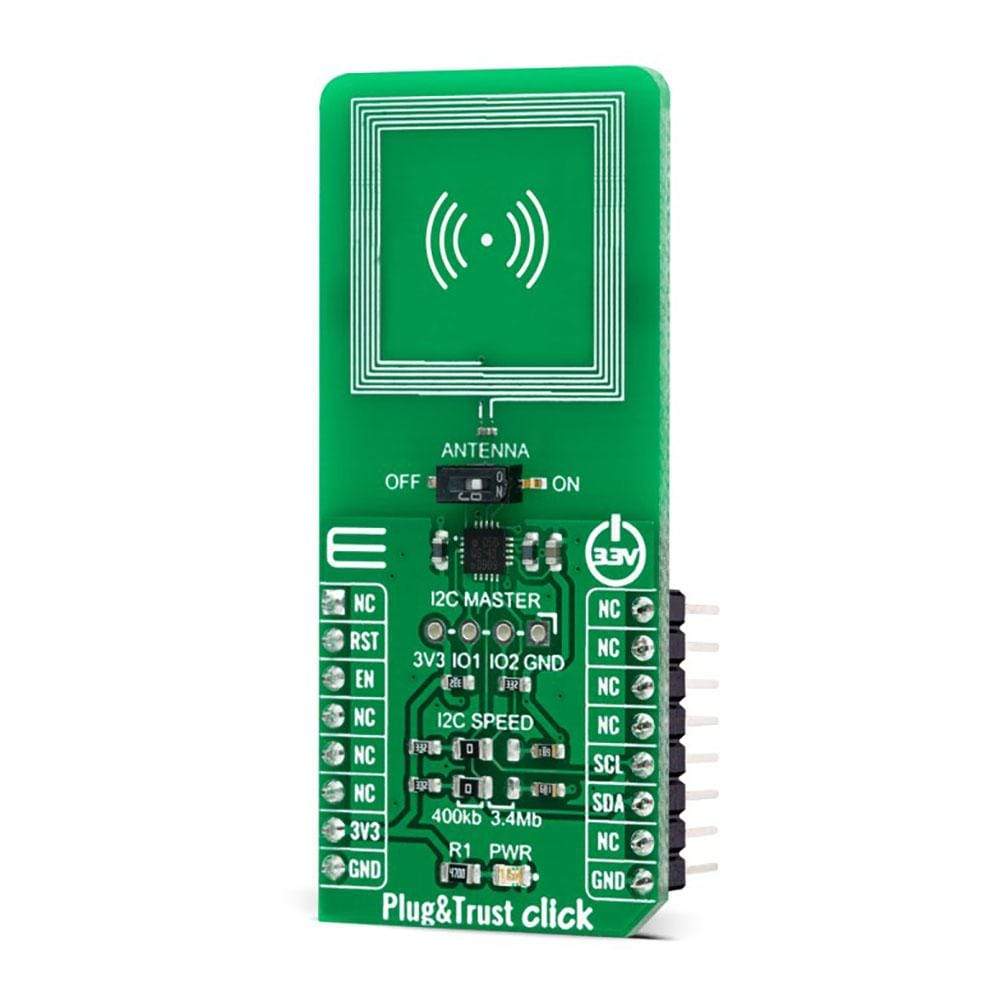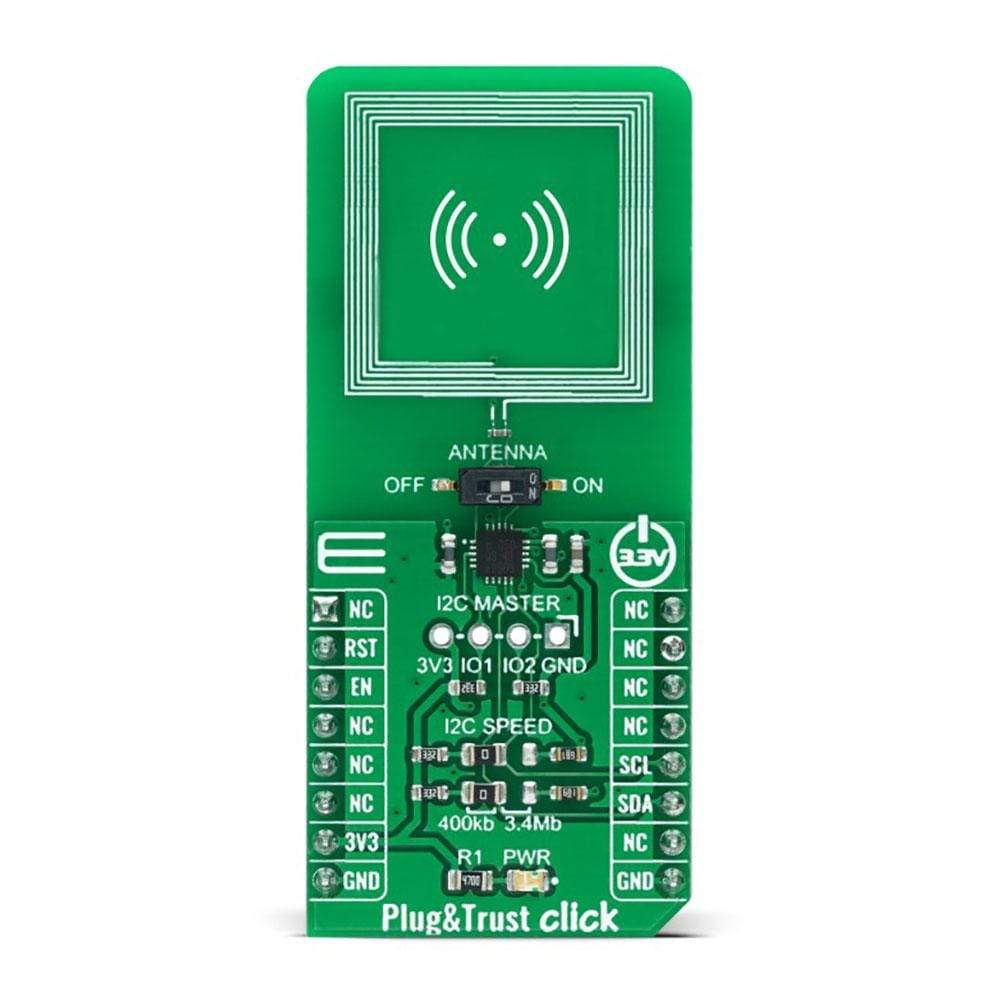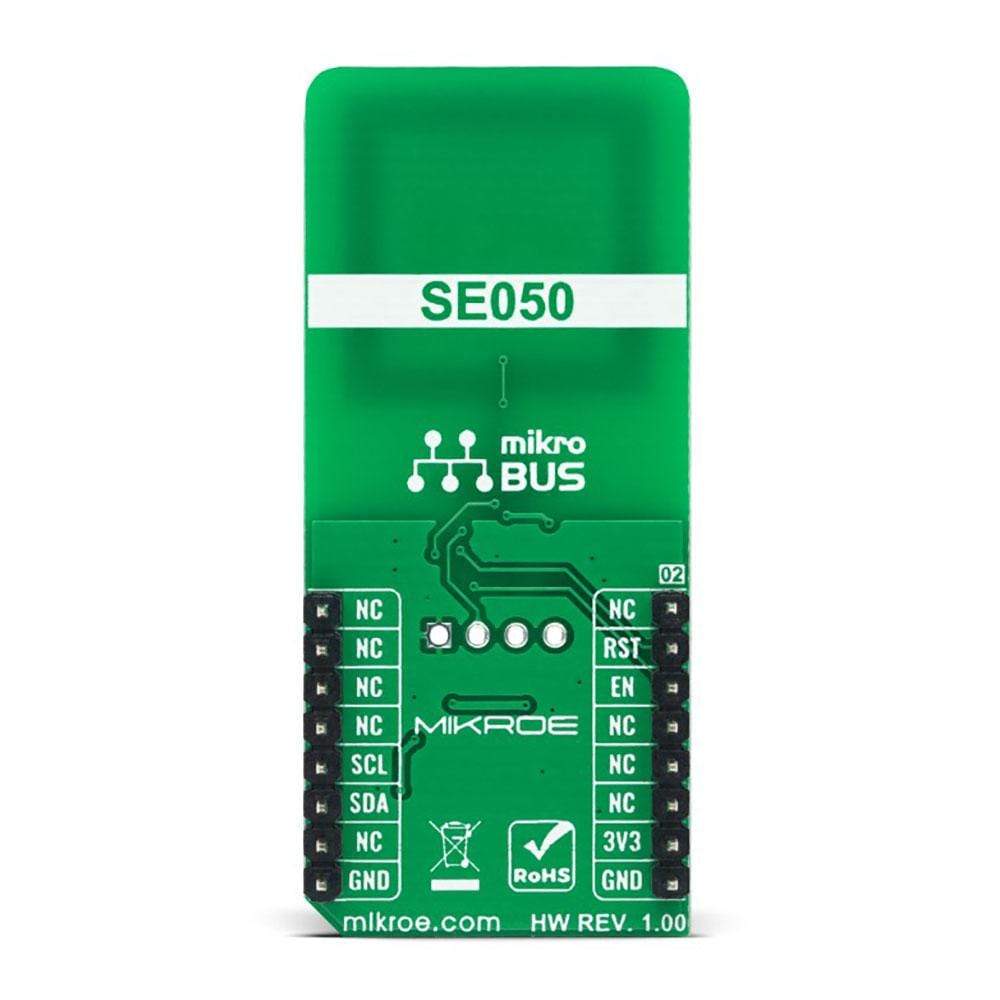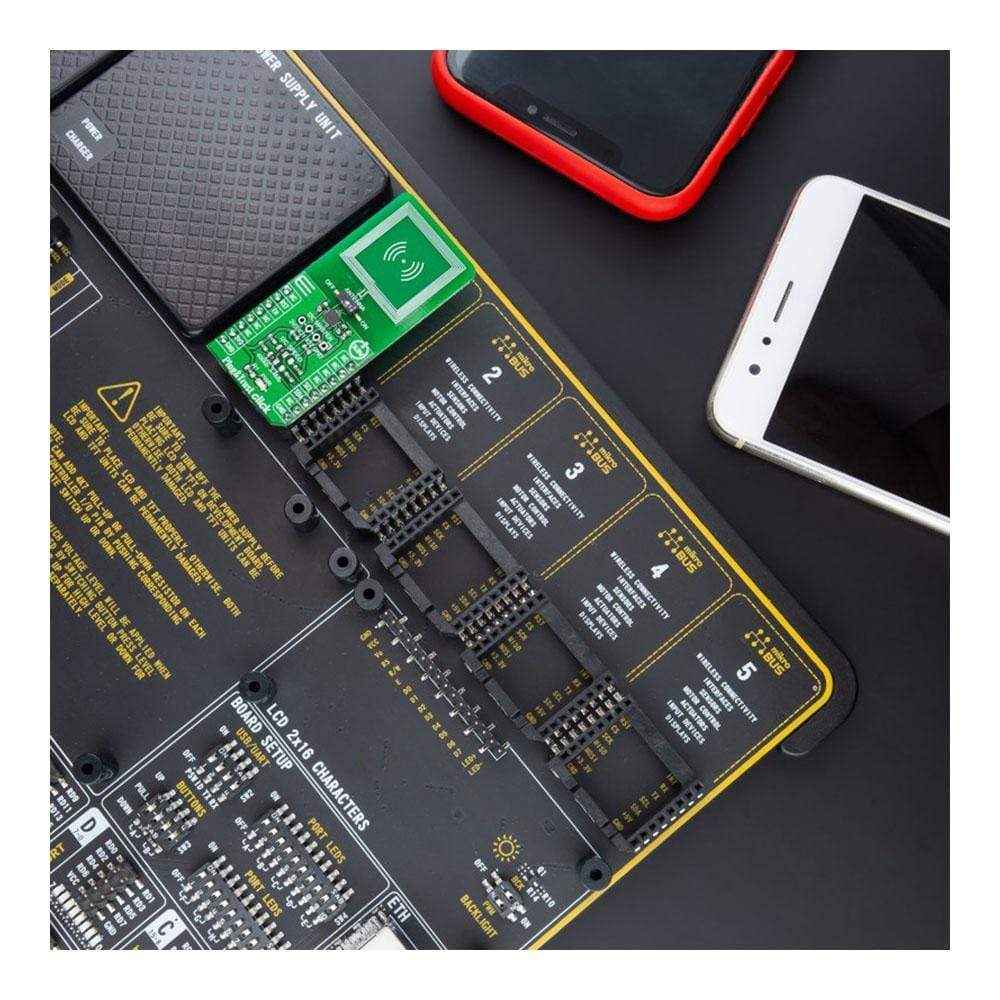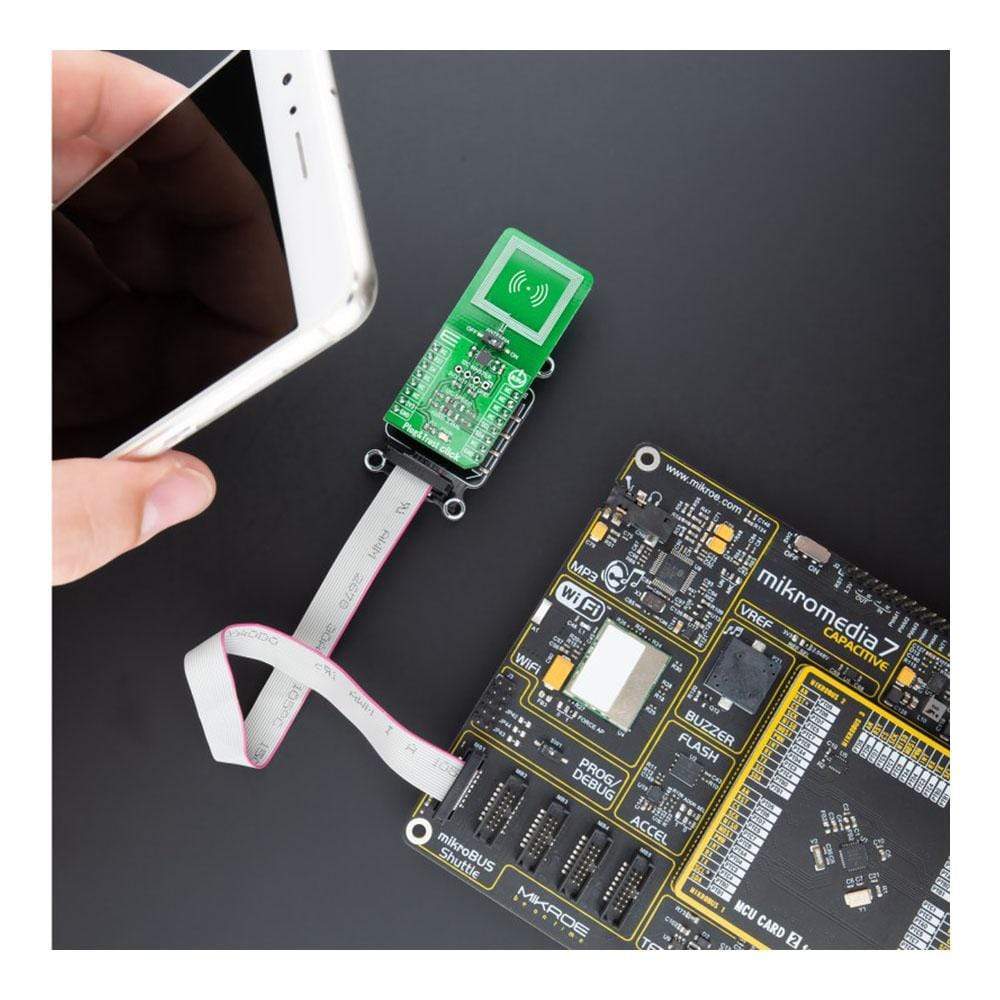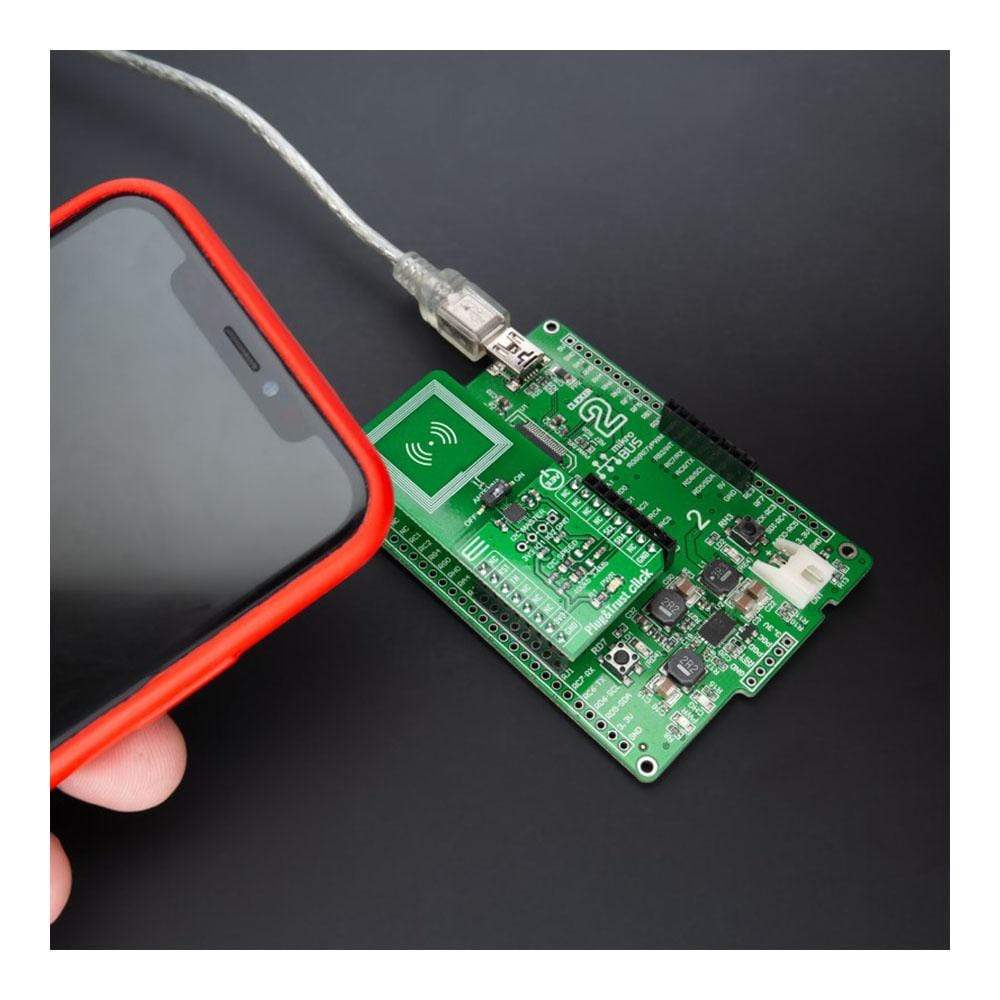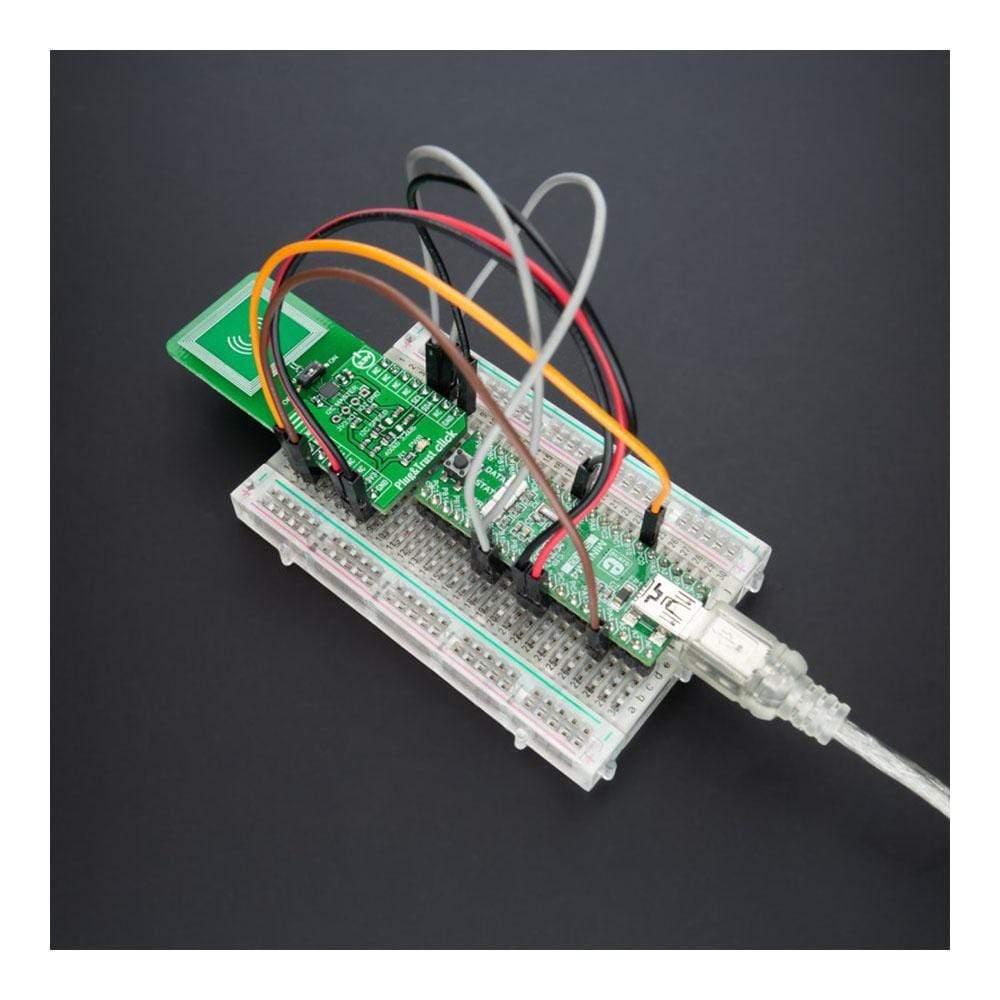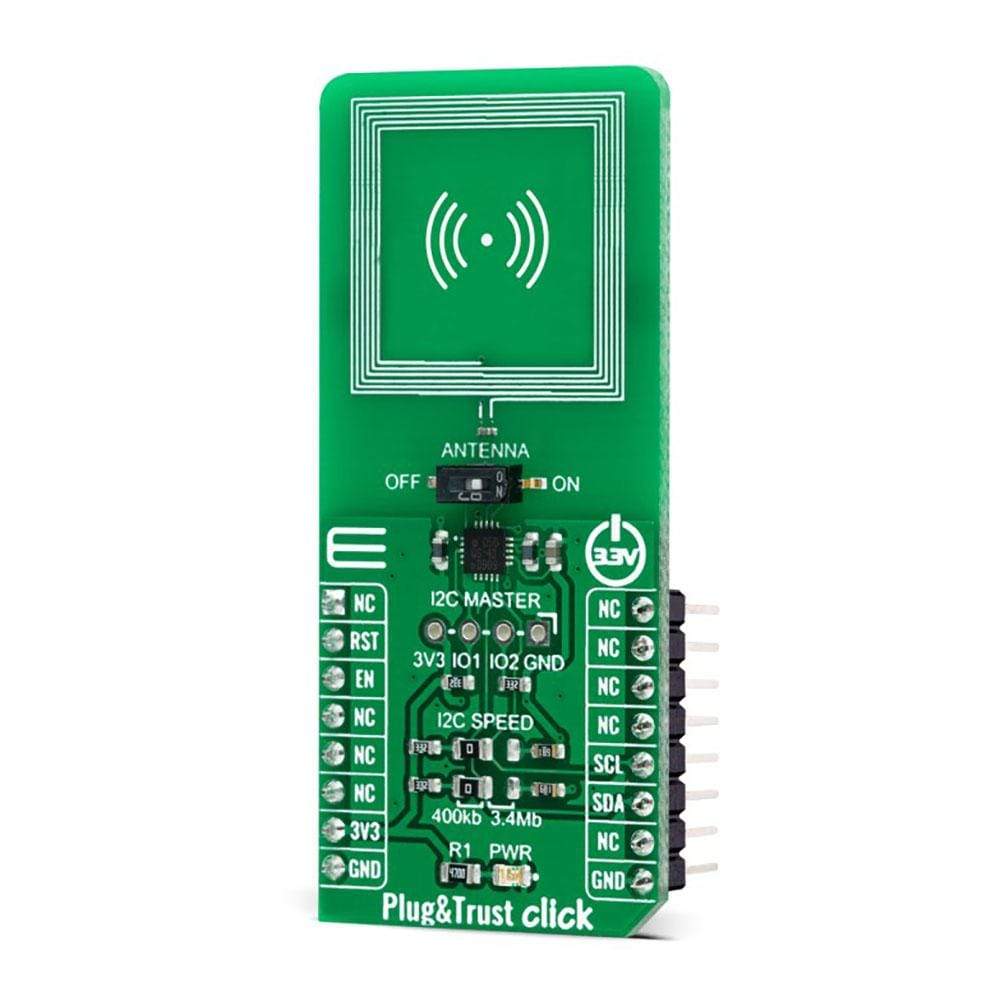
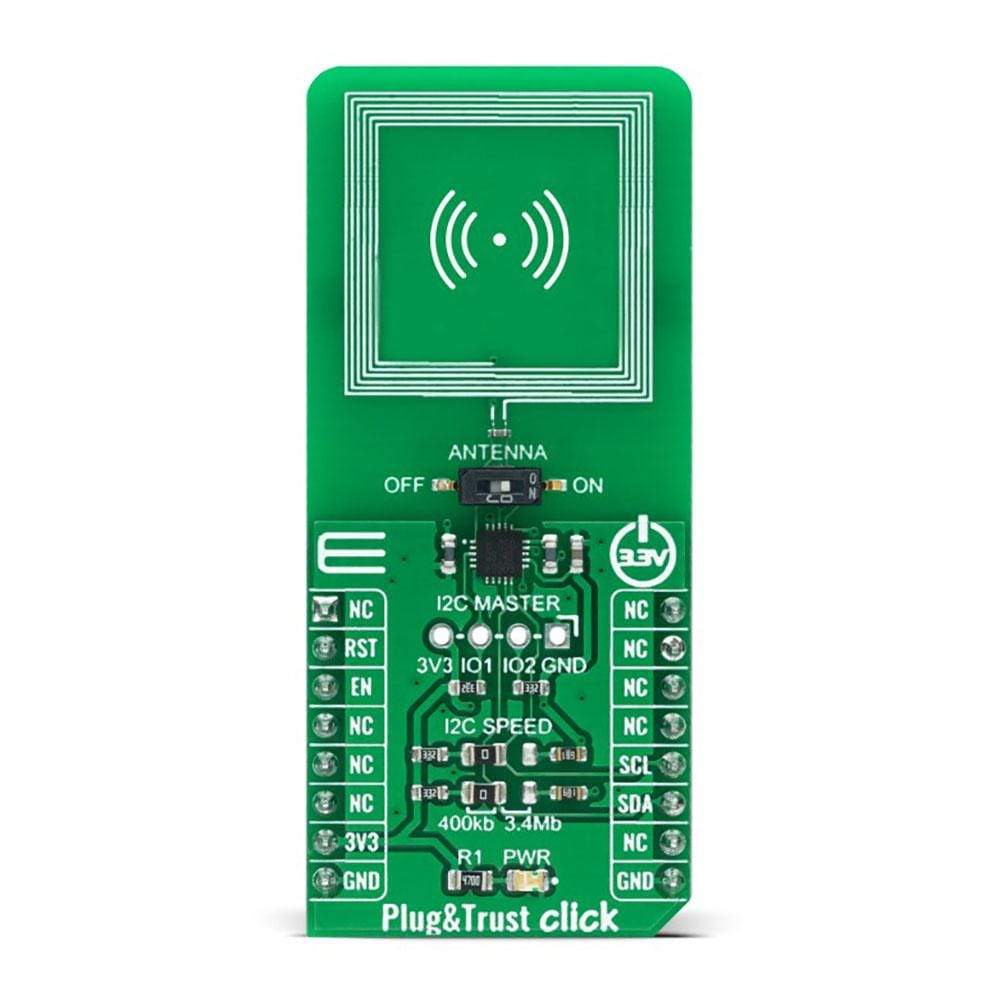
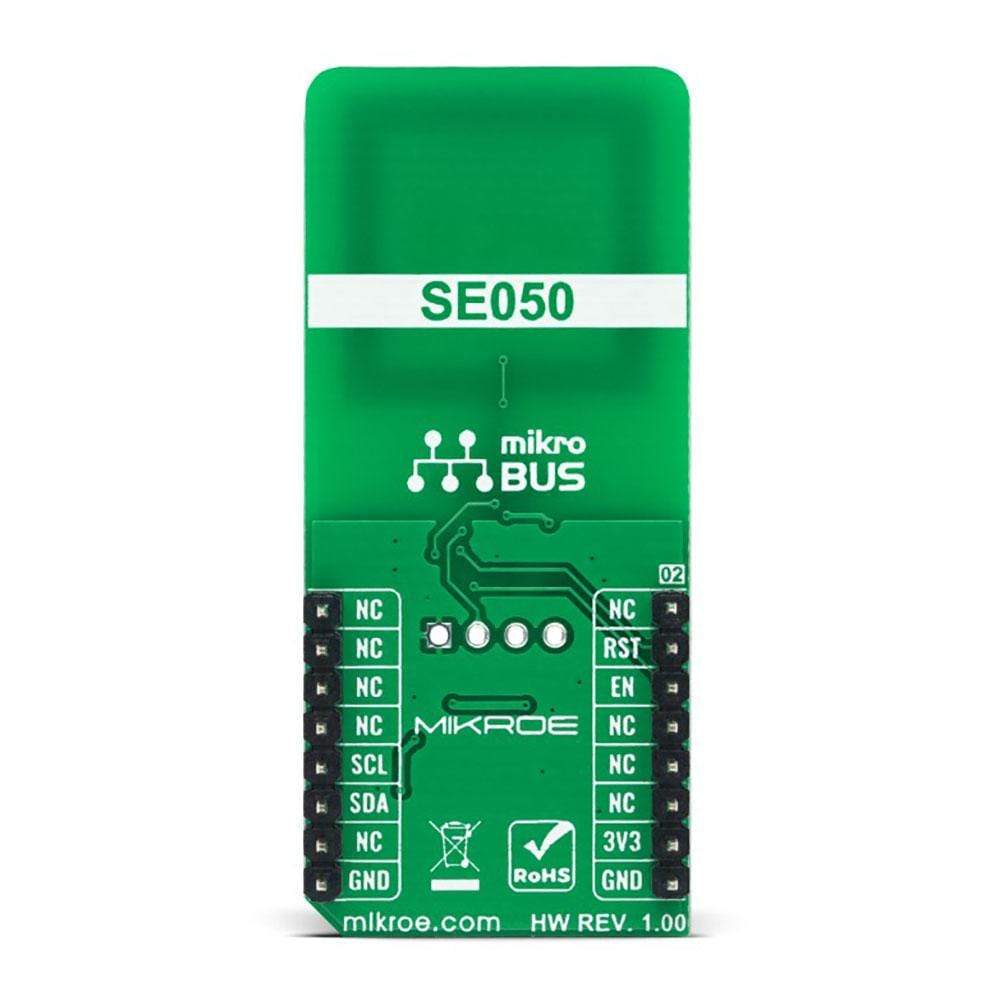
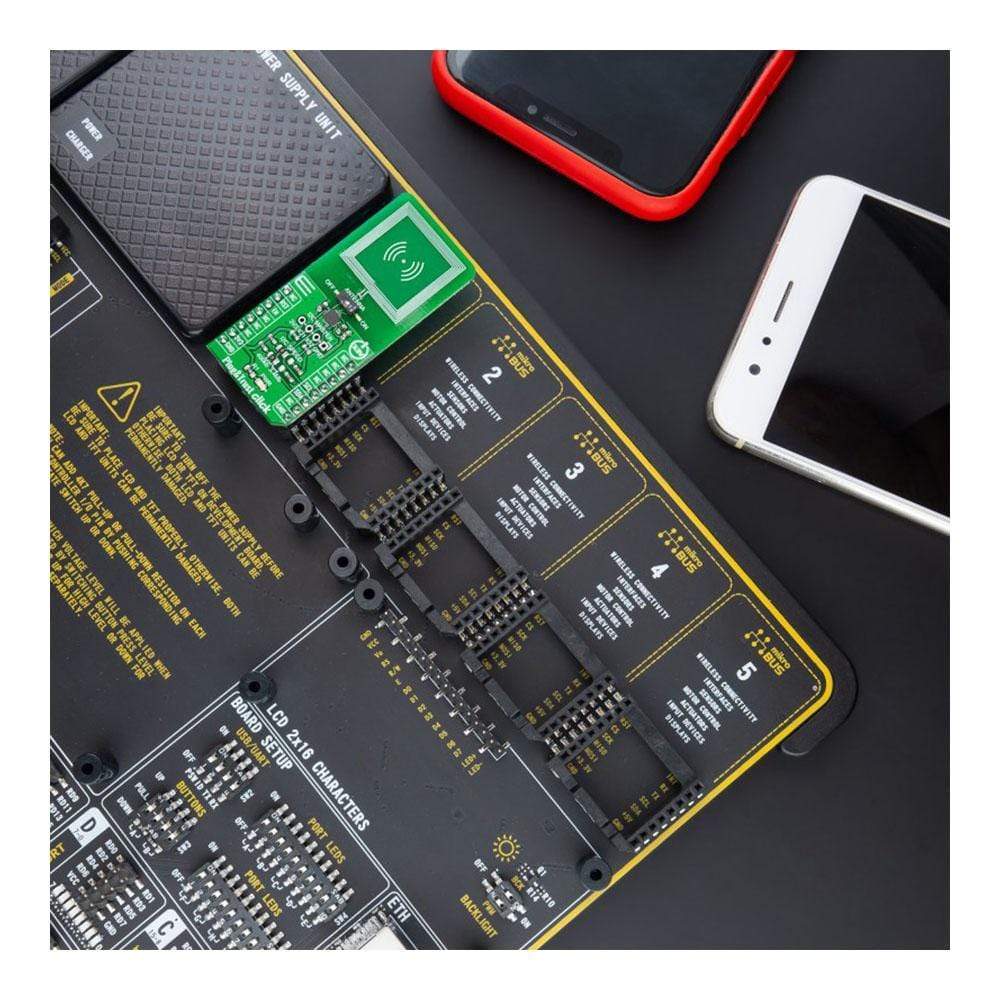
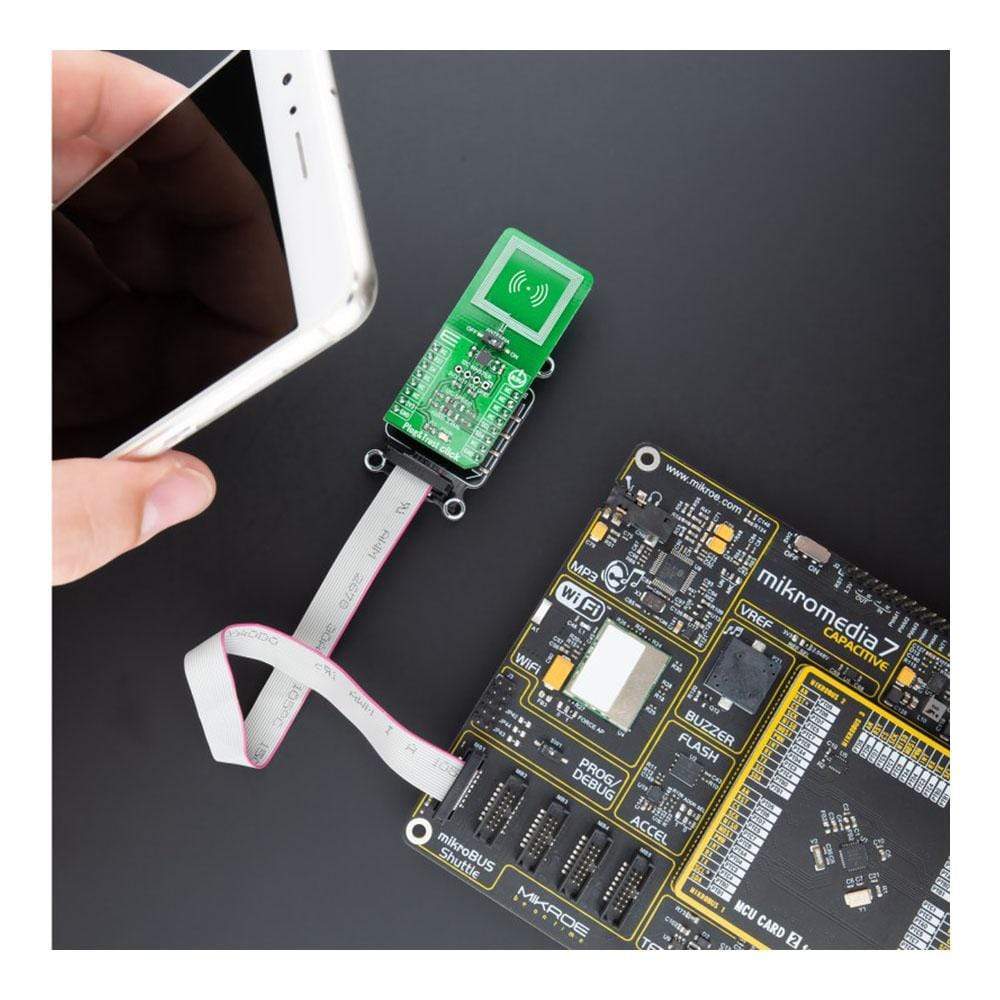
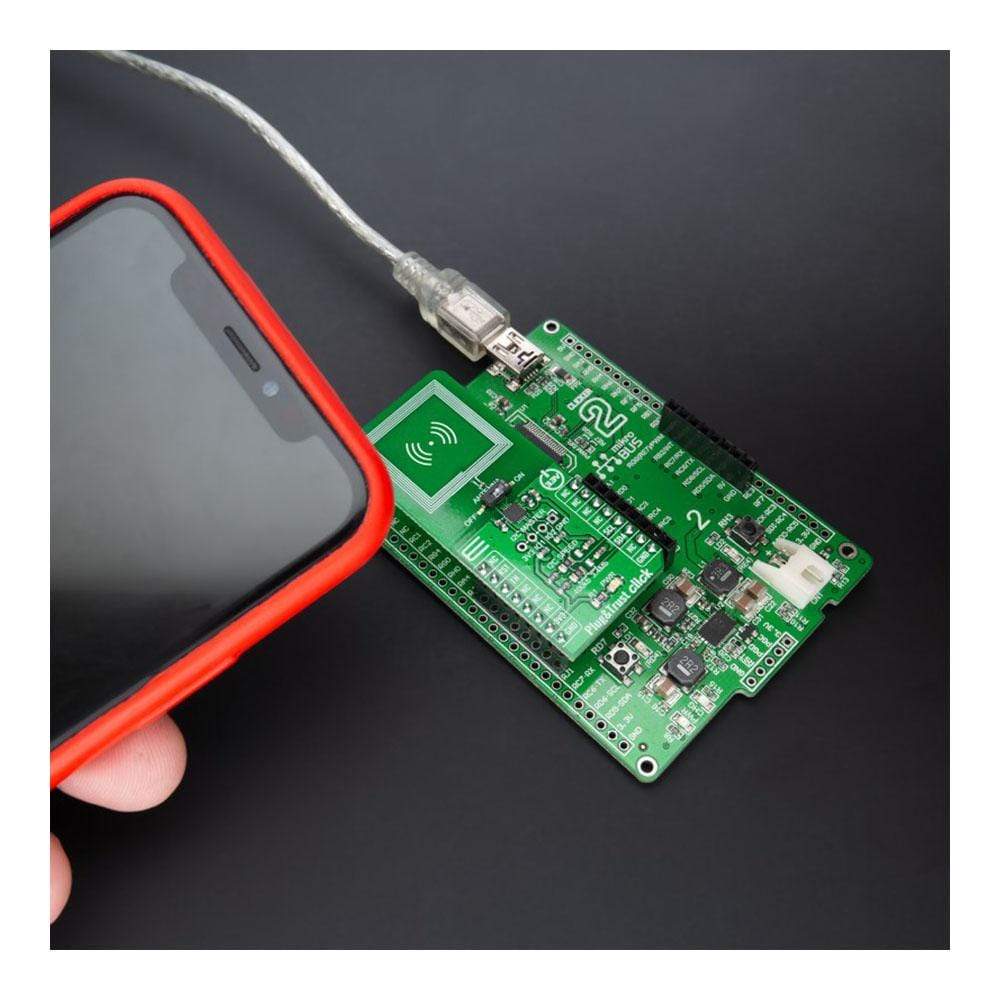
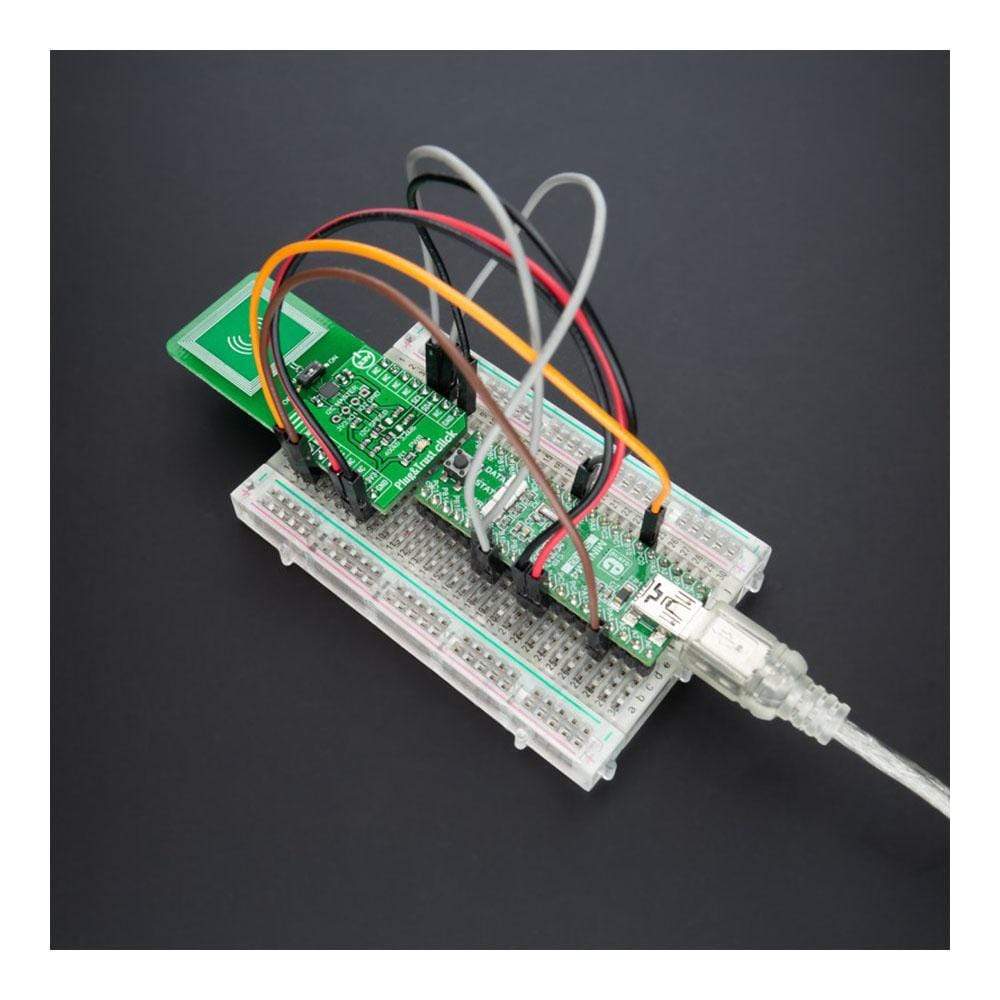
Overview
The Plug&Trust Click Board™ is a compact add-on board that contains a ready-to-use IoT secure element solution. This board features the SE050C secure element IC NXP, which provides a root of trust at the IC level, and it gives an IoT system state-of-the-art, edge-to-cloud security capability. The SE050C allows for securely storing and provisioning credentials and performing cryptographic operations for security-critical communication and control functions. It has an independent Common Criteria EAL 6+ security certification up to OS level and supports both RSA & ECC asymmetric cryptographic algorithms with high key length and future proof ECC curves, protecting the SE050C even against sophisticated non-invasive and invasive attack scenarios. This Click Board™ is suitable in IoT security use cases such as secure connection to public/private clouds, device-to-device authentication, sensor data protection, and more.
Plug&Trust Click is supported by a mikroSDK compliant library, which includes functions that simplify software development. This Click Board™ comes as a fully tested product, ready to be used on a system equipped with the mikroBUS™ socket.
Downloads
Das Plug&Trust Click Board™ ist eine kompakte Zusatzplatine, die eine gebrauchsfertige IoT-Secure-Element-Lösung enthält. Diese Platine verfügt über das SE050C Secure Element IC NXP, das eine Vertrauensbasis auf IC-Ebene bietet und einem IoT-System modernste Edge-to-Cloud-Sicherheitsfunktionen verleiht. Das SE050C ermöglicht die sichere Speicherung und Bereitstellung von Anmeldeinformationen und die Durchführung kryptografischer Vorgänge für sicherheitskritische Kommunikations- und Steuerungsfunktionen. Es verfügt über eine unabhängige Common Criteria EAL 6+-Sicherheitszertifizierung bis auf Betriebssystemebene und unterstützt sowohl RSA- als auch ECC-asymmetrische kryptografische Algorithmen mit hoher Schlüssellänge und zukunftssicheren ECC-Kurven, wodurch das SE050C sogar vor anspruchsvollen nichtinvasiven und invasiven Angriffsszenarien geschützt ist. Dieses Click Board™ eignet sich für IoT-Sicherheitsanwendungsfälle wie sichere Verbindungen zu öffentlichen/privaten Clouds, Gerät-zu-Gerät-Authentifizierung, Sensordatenschutz und mehr.
Plug&Trust Klick wird durch eine mikroSDK-kompatible Bibliothek unterstützt, die Funktionen enthält, die die Softwareentwicklung vereinfachen. Dieses Click Board™ wird als vollständig getestetes Produkt geliefert und ist bereit für den Einsatz auf einem System, das mit der mikroBUS™-Buchse ausgestattet ist.
| General Information | |
|---|---|
Part Number (SKU) |
MIKROE-4656
|
Manufacturer |
|
| Physical and Mechanical | |
Weight |
0.02 kg
|
| Other | |
Country of Origin |
|
HS Code Customs Tariff code
|
|
EAN |
8606027382666
|
Warranty |
|
Frequently Asked Questions
Have a Question?
Be the first to ask a question about this.

